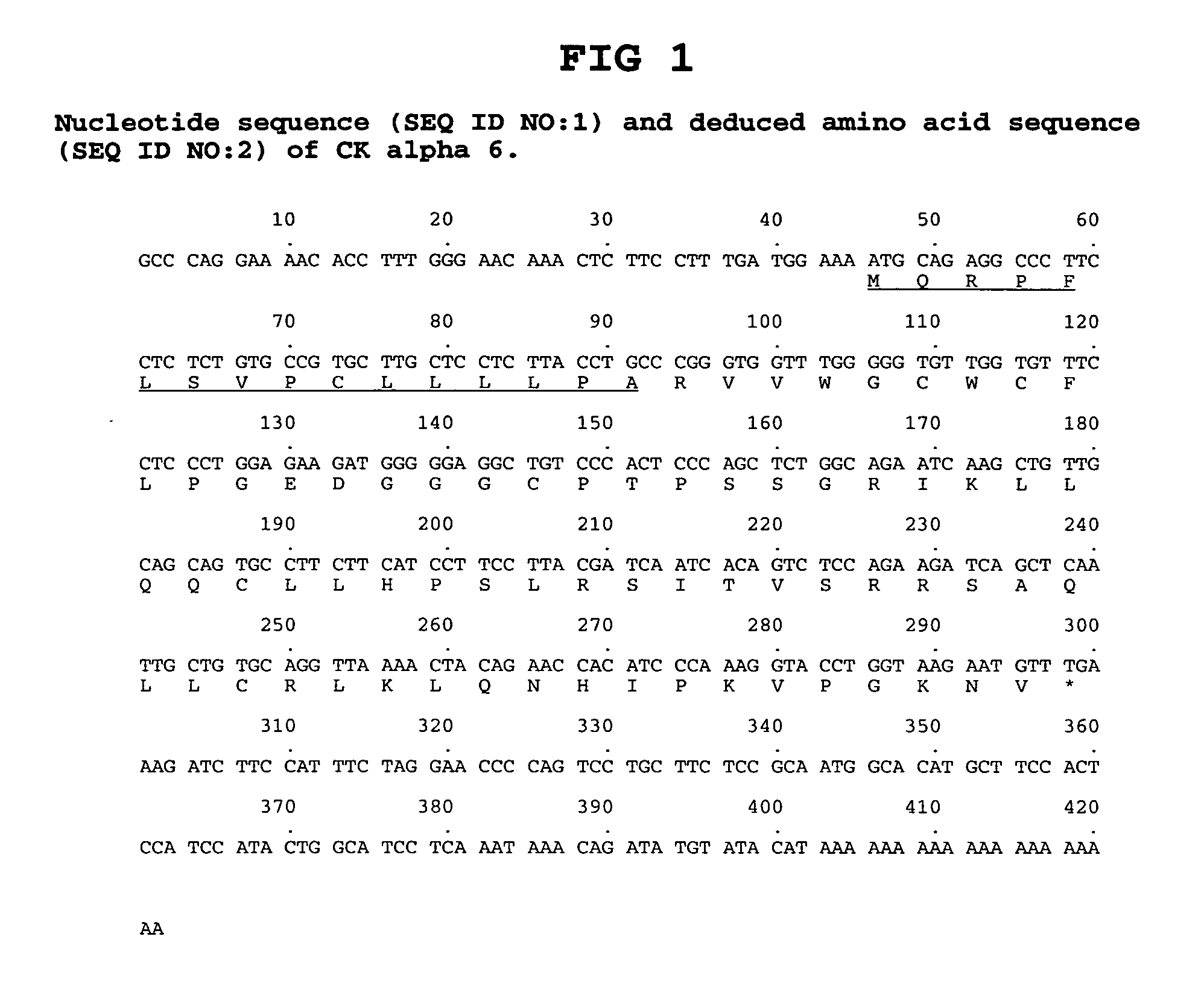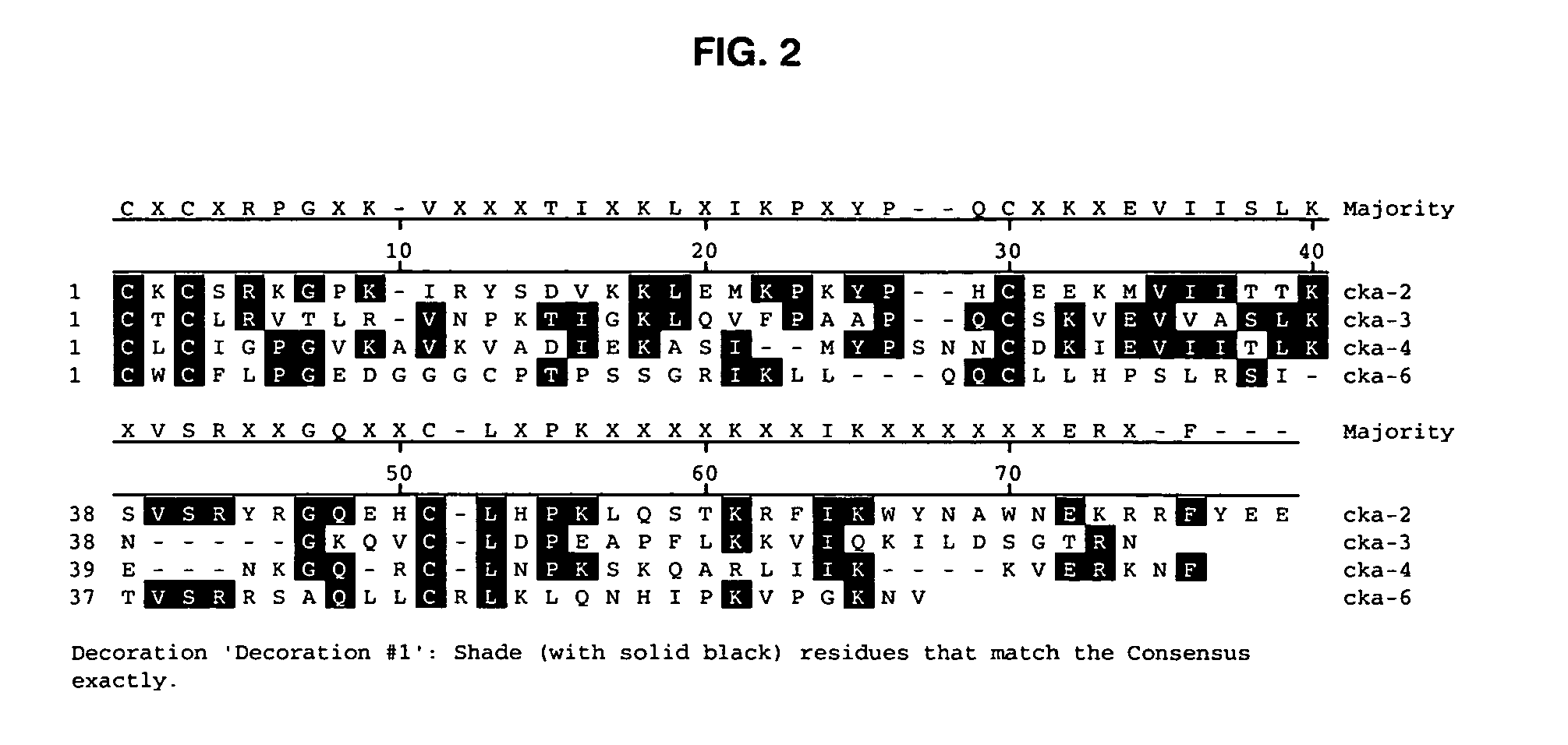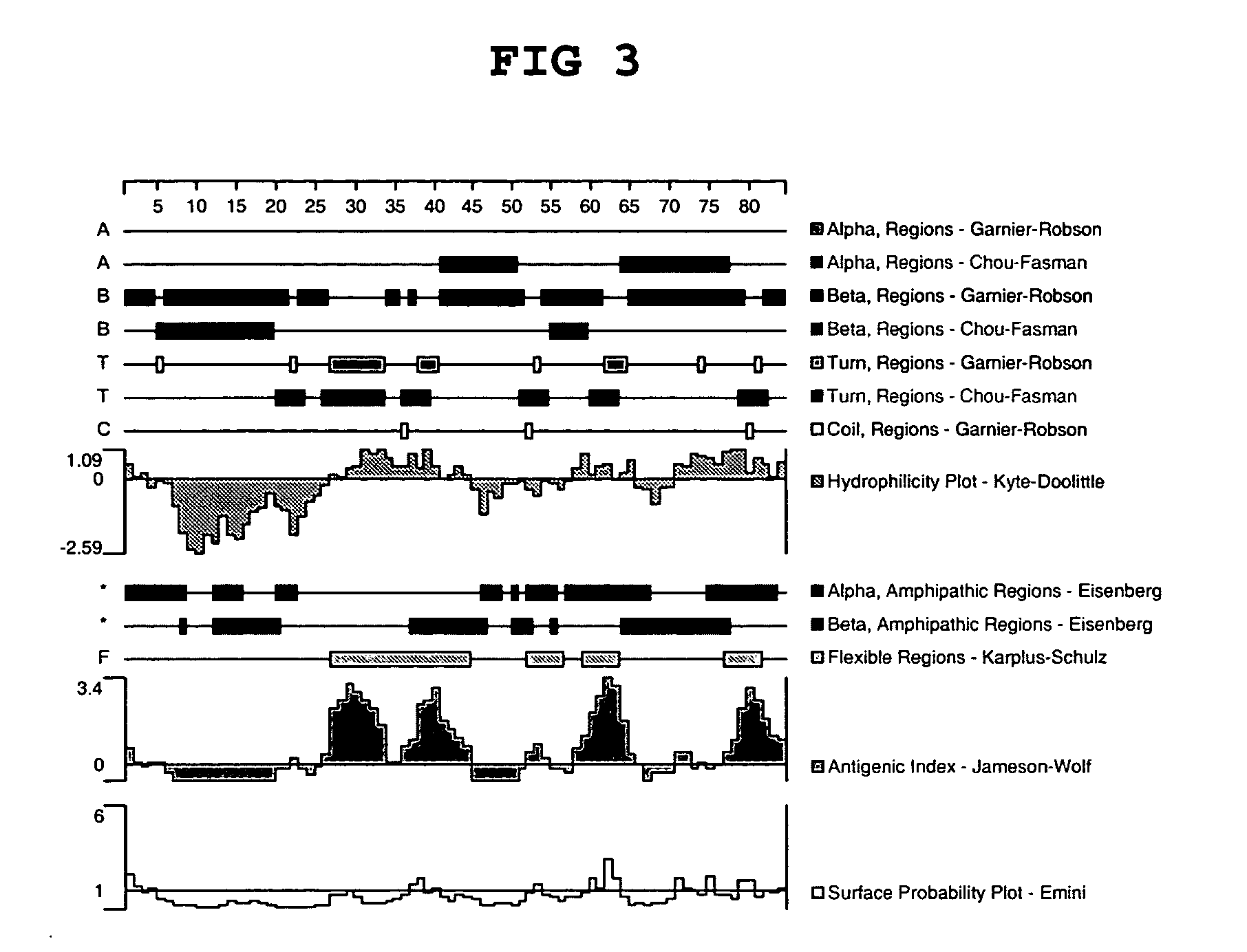Antibodies to chemokine alpha-6
- Summary
- Abstract
- Description
- Claims
- Application Information
AI Technical Summary
Benefits of technology
Problems solved by technology
Method used
Image
Examples
example 1
Cloning and Expression of CKα-6 in E. Coli
[0174] The present invention includes an expression vector comprising phage operator and promoter elements operatively linked to a polynucleotide of the present invention, called pHE4a. (ATCC® Accession Number 209645, deposited on Feb. 25, 1998.) This vector contains: 1) a neomycinphosphotransferase gene as a selection marker, 2) an E. coli origin of replication, 3) a T5 phage promoter sequence, 4) two lac operator sequences, 5) a Shine-Delgamo sequence, and 6) the lactose operon repressor gene (lacIq). The origin of replication (oriC) is derived from pUC19 (LTI, Gaithersburg, Md). The promoter sequence and operator sequences were made synthetically.
[0175] DNA can be inserted into the pHEa by restricting the vector with NdeI and XbaI, BamHI, XhoI, or Asp718, running the restricted product on a gel, and isolating the larger fragment (the stuffer fragment should be about 310 base pairs). The DNA insert is generated according to the PCR proto...
example 2
Cloning and Expression of CKα-6 Protein in a Baculovirus Expression System
[0189] In this illustrative example, the plasmid shuttle vector pA2 is used to insert the cloned DNA encoding complete protein, including its naturally associated secretory signal (leader) sequence, into a baculovirus to express the mature CKα-6 protein, using standard methods as described in Summers et al., A Manual of Methods for Baculovirus Vectors and Insect Cell Culture Procedures, Texas Agricultural Experimental Station Bulletin No. 1555 (1987). This expression vector contains the strong polyhedrin promoter of the Autographa californica nuclear polyhedrosis virus (AcMNPV) followed by convenient restriction sites such as BamHI, Xba I and Asp718. The polyadenylation site of the simian virus 40 (“SV40”) is used for efficient polyadenylation. For easy selection of recombinant virus, the plasmid contains the beta-galactosidase gene from E. coli under control of a weak Drosophila promoter in the same orientat...
example 3
(B) Cloning and Expression in CHO Cells
[0209] The vector pC4 is used for the expression of CKα-6 polypeptide in this example. Plasmid pC4 is a derivative of the plasmid pSV2-dhfr (ATCC® Accession No. 37146). The plasmid contains the mouse DHFR gene under control of the SV40 early promoter. Chinese hamster ovary- or other cells lacking dihydrofolate activity that are transfected with these plasmids can be selected by growing the cells in a selective medium (alpha minus MEM, Life Technologies) supplemented with the chemotherapeutic agent methotrexate. The amplification of the DHFR genes in cells resistant to methotrexate (MTX) has been well documented (see, e.g., Alt, F. W., Kellems, R. M., Bertino, J. R., and Schinike, R. T., 1978, J Biol. Chem. 253:1357-1370, Hamlin, J. L. and Ma, C. 1990, Biochem. et Biophys. Acta, 1097:107-143, Page, M. J. and Sydenham, M. A. 1991, Biotechnology 9:64-68). Cells grown in increasing concentrations of MTX develop resistance to the drug by overproduc...
PUM
 Login to View More
Login to View More Abstract
Description
Claims
Application Information
 Login to View More
Login to View More - R&D
- Intellectual Property
- Life Sciences
- Materials
- Tech Scout
- Unparalleled Data Quality
- Higher Quality Content
- 60% Fewer Hallucinations
Browse by: Latest US Patents, China's latest patents, Technical Efficacy Thesaurus, Application Domain, Technology Topic, Popular Technical Reports.
© 2025 PatSnap. All rights reserved.Legal|Privacy policy|Modern Slavery Act Transparency Statement|Sitemap|About US| Contact US: help@patsnap.com



